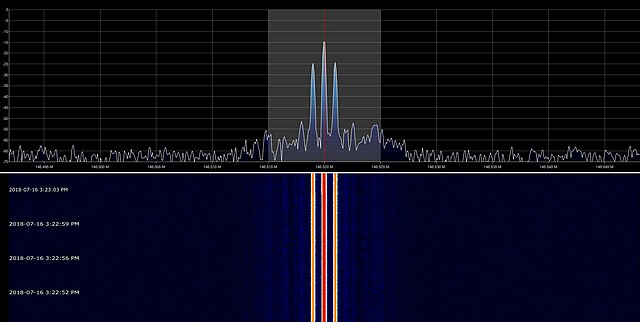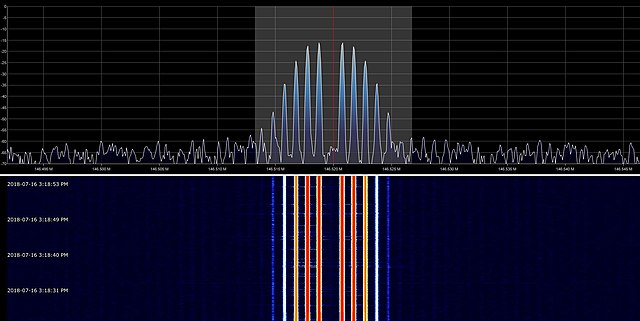Amplitude modulation (AM) is a modulation technique used in electronic communication, most commonly for transmitting messages with a radio wave. In amplitude modulation, the amplitude of the wave is varied in proportion to that of the message signal, such as an audio signal. This technique contrasts with angle modulation, in which either the frequency of the carrier wave is varied, as in frequency modulation, or its phase, as in phase modulation.
One of the crude pre-vacuum tube AM transmitters, a Telefunken arc transmitter from 1906. The carrier wave is generated by 6 electric arcs in the vertical tubes, connected to a tuned circuit. Modulation is done by the large carbon microphone (cone shape) in the antenna lead.
One of the first vacuum tube AM radio transmitters, built by Meissner in 1913 with an early triode tube by Robert von Lieben. He used it in a historic 36 km (24 mi) voice transmission from Berlin to Nauen, Germany. Compare its small size with above transmitter.
Figure 3: The spectrogram of an AM voice broadcast shows the two sidebands (green) on either side of the carrier (red) with time proceeding in the vertical direction.
Modulation is defined as the process by which some characteristics like amplitude, frequency, and phase of a carrier signal are varied in accordance with a modulating wave.
Waterfall plot of a 146.52 MHz radio carrier, with amplitude modulation by a 1,000 Hz sinusoid. Two strong sidebands at + and - 1 kHz from the carrier frequency are shown.
A carrier, frequency modulated by a 1,000 Hz sinusoid. The modulation index has been adjusted to around 2.4, so the carrier frequency has small amplitude. Several strong sidebands are apparent; in principle an infinite number are produced in FM but the higher-order sidebands are of negligible magnitude.





